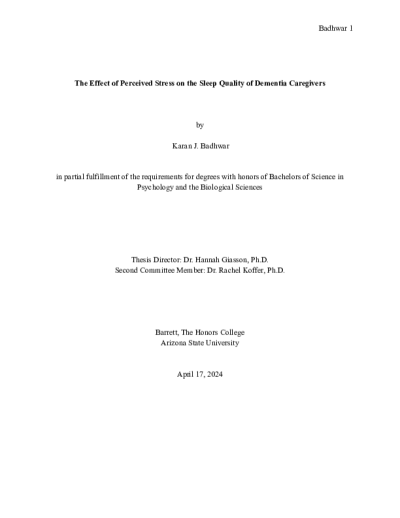Filtering by
- Creators: School of Life Sciences

The burden of dementia and its primary cause, Alzheimer’s disease, continue to devastate many with no available cure although present research has delivered methods for risk calculation and models of disease development that promote preventative strategies. Presently Alzheimer’s disease affects 1 in 9 people aged 65 and older amounting to a total annual healthcare cost in 2023 in the United States of $345 billion between Alzheimer’s disease and other dementias making dementia one of the costliest conditions to society (“2023 Alzheimer’s Disease Facts and Figures,” 2023). This substantial cost can be dramatically lowered in addition to a reduction in the overall burden of dementia through the help of risk prediction models, but there is still a need for models to deliver an individual’s predicted time of onset that supplements risk prediction in hopes of improving preventative care. The aim of this study is to develop a model used to predict the age of onset for all-cause dementias and Alzheimer’s disease using demographic, comorbidity, and genetic data from a cohort sample. This study creates multiple regression models with methods of ordinary least squares (OLS) and least absolute shrinkage and selection operator (LASSO) regression methods to understand the capacity of predictor variables that estimate age of onset for all-cause dementia and Alzheimer’s disease. This study is unique in its use of a diverse cohort containing 346 participants to create a predictive model that originates from the All of Us Research Program database and seeks to represent an accurate sampling of the United States population. The regression models generated had no predictive capacity for the age of onset but outline a simplified approach for integrating public health data into a predictive model. The results from the generated models suggest a need for continued research linking risk factors that estimate time of onset.


This narrative literature review explores how perceived stress affects sleep quality in dementia caregivers by examining various factors. Ten studies from 2013 to 2022 across four continents were analyzed, focusing on caregiver stress levels, sleep quality, caregiver burden, and depression. Higher stress levels were linked to poorer sleep quality, alongside factors like emotional distress and disrupted sleep patterns. The findings highlight the importance of targeted interventions to reduce stress and improve sleep quality among dementia caregivers, suggesting the need for longitudinal and empirical studies with standardized measures for a better understanding.